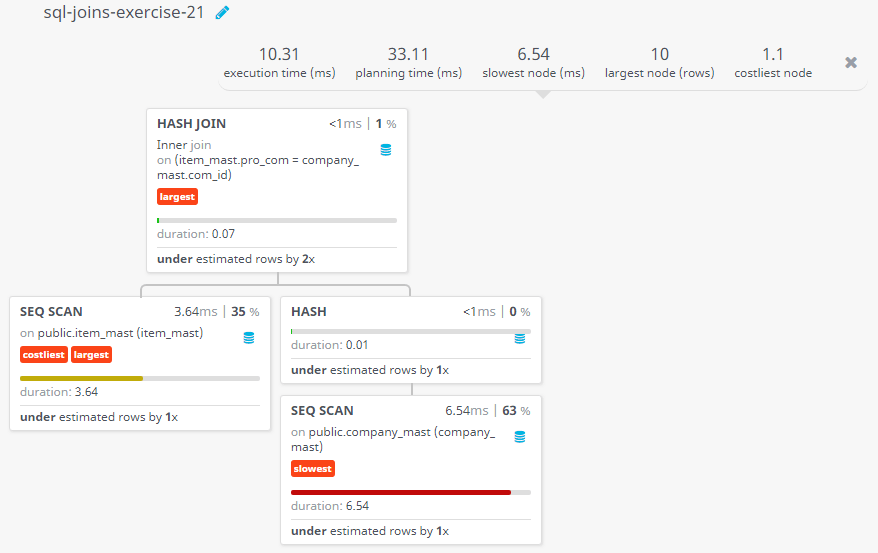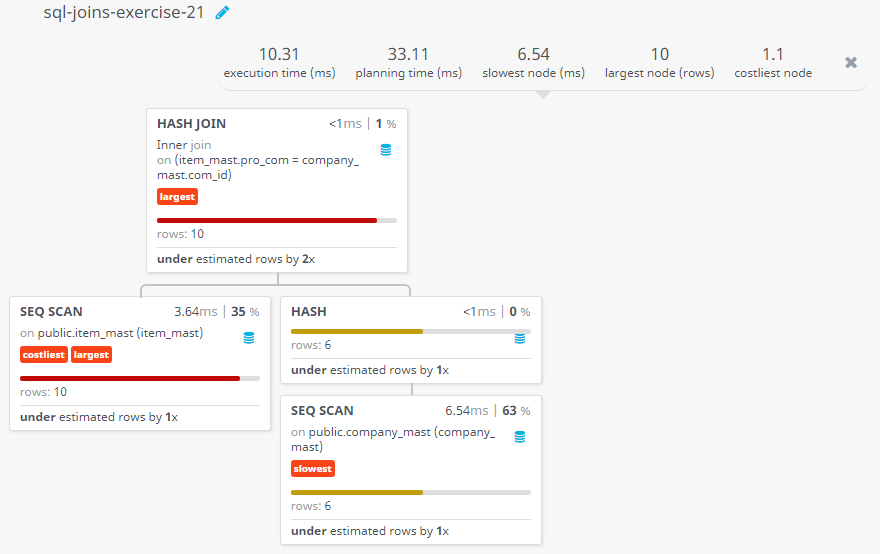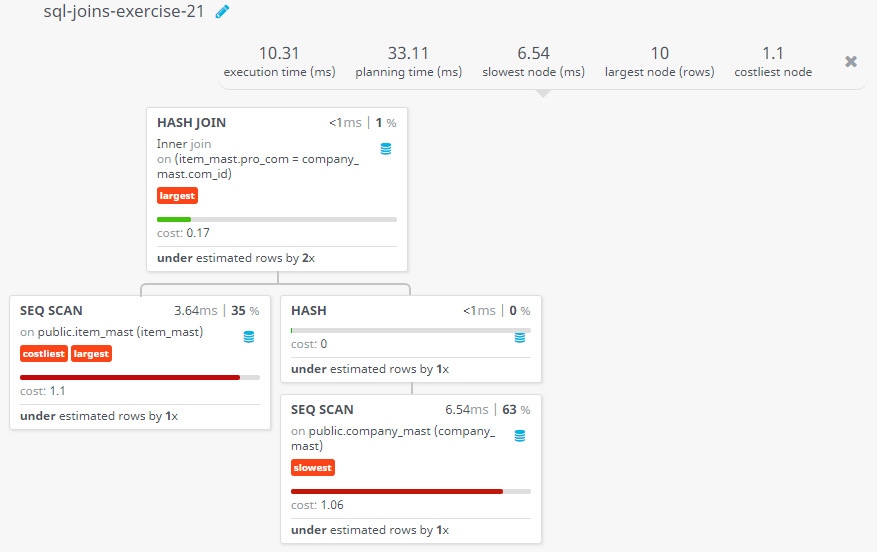SQL Exercise: Display each item producer company
21. Matched Company & Item Join
From the following tables write a SQL query to select all rows from both participating tables as long as there is a match between pro_com and com_id.
Sample table: company_mast
COM_ID COM_NAME
------ -------------
11 Samsung
12 iBall
13 Epsion
14 Zebronics
15 Asus
16 Frontech
Sample table: item_mast
PRO_ID PRO_NAME PRO_PRICE PRO_COM
------- ------------------------- -------------- ----------
101 Mother Board 3200.00 15
102 Key Board 450.00 16
103 ZIP drive 250.00 14
104 Speaker 550.00 16
105 Monitor 5000.00 11
106 DVD drive 900.00 12
107 CD drive 800.00 12
108 Printer 2600.00 13
109 Refill cartridge 350.00 13
110 Mouse 250.00 12
Sample Solution:
-- Selecting all columns from the result of an inner join between 'item_mast' and 'company_mast' tables
SELECT *
-- Specifying the tables to retrieve data from ('item_mast' as the left table and 'company_mast' as the right table)
FROM item_mast
-- Performing an inner join based on the equality of 'pro_com' in 'item_mast' and 'com_id' in 'company_mast'
INNER JOIN company_mast
ON item_mast.pro_com = company_mast.com_id;
Output of the Query:
pro_id pro_name pro_price pro_com com_id com_name 101 Mother Board 3200.00 15 15 Asus 102 Key Board 450.00 16 16 Frontech 103 ZIP drive 250.00 14 14 Zebronics 104 Speaker 550.00 16 16 Frontech 105 Monitor 5000.00 11 11 Samsung 106 DVD drive 900.00 12 12 iBall 107 CD drive 800.00 12 12 iBall 108 Printer 2600.00 13 13 Epsion 109 Refill cartridge 350.00 13 13 Epsion 110 Mouse 250.00 12 12 iBall
Explanation:
The said SQL query that retrieves all columns from the table item_mast and company_mast and combines the data based on the join condition specified in the ON clause.
The join condition is that the 'pro_com' column in the item_mast table matches the 'com_id' column in the company_mast table. The result of the query is a new table that contains all the columns from both item_mast and company_mast, with rows that have matching values in the specified columns.
Relational Algebra Expression:
Relational Algebra Tree:
Go to:
PREV : Cartesian Product with Non Matching Cities.
NEXT : Product & Company Details.
Practice Online
Query Visualization:
Duration:
Rows:
Cost:
For more Practice: Solve these Related Problems:
- Write a SQL query to perform an INNER JOIN between company_mast and item_mast on pro_com = com_id, returning all columns from both tables.
- Write a SQL query to select all rows from company_mast and item_mast where the company ID matches the product’s company code.
- Write a SQL query to combine company and item data using a join condition on pro_com and com_id to output only matching records.
- Write a SQL query to display the complete details from both tables for rows where pro_com equals com_id.
Have another way to solve this solution? Contribute your code (and comments) through Disqus.
What is the difficulty level of this exercise?
Test your Programming skills with w3resource's quiz.




